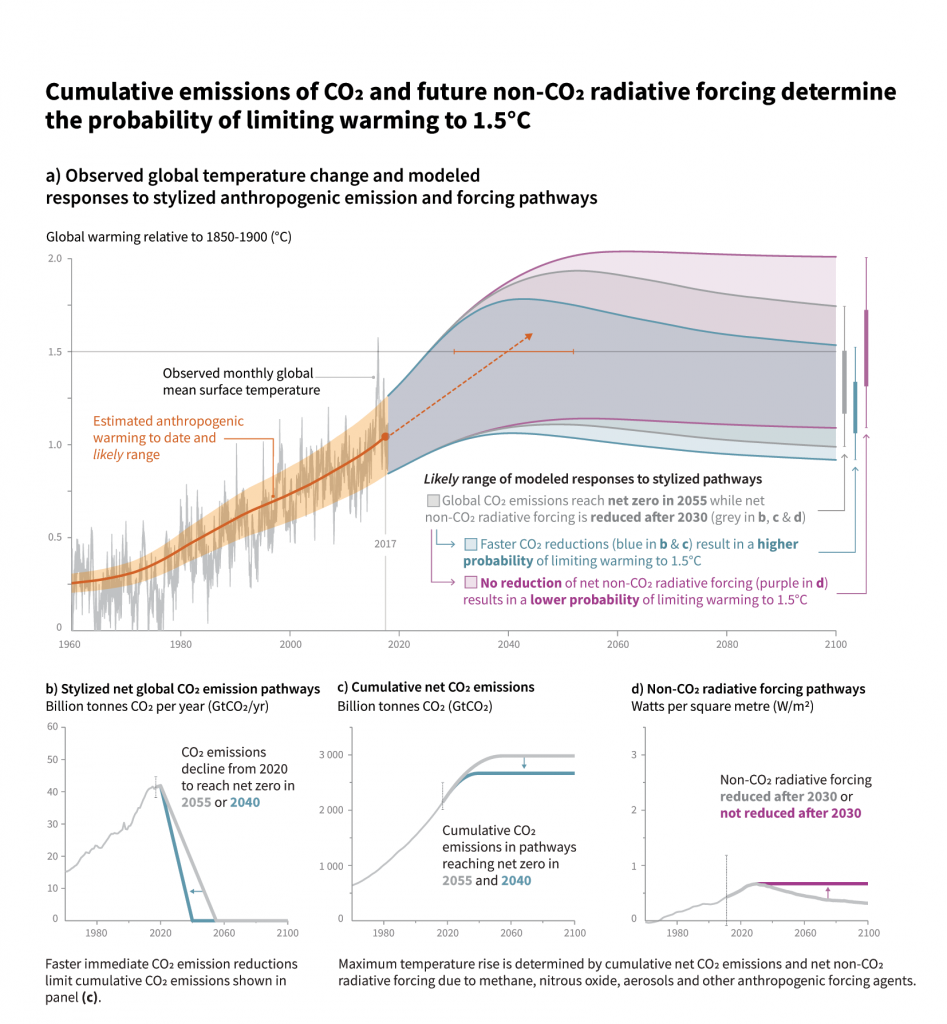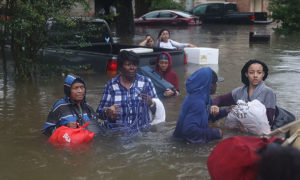Climate Change in Texas
Texas is already experiencing the effects of climate change and is expected to experience increasing negative effects in the coming decades. Urgent action is needed to reduce greenhouse gas emissions in all sectors. We're working with Texas communities to get local governments to take action.
Texas is the U.S. state most vulnerable to climate change. Between 1980 and 2022, 44 percent of all billion-dollar climate and weather disasters (154 of 348 events) impacted Texas. These catastrophic events include Winter Storm Uri (2021), Hurricane Harvey (2017), and the severe drought of 2011.
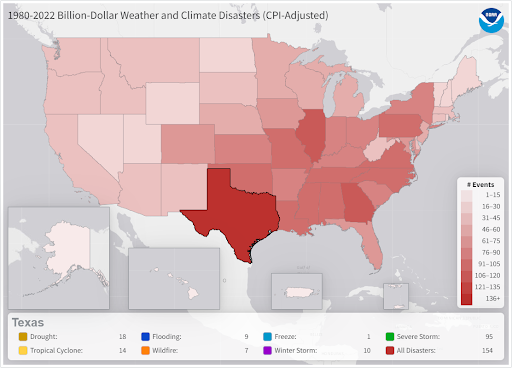
In Texas, Climate Action is Local
State leaders refuse to take the bold action necessary to limit Texas’ climate change contribution or adapt to its impacts. Texas is the largest emitter of greenhouse gasses, led by fossil fuel extraction and petrochemical production industries.
Public Citizen has focused on climate action and adaptation at the local level, with major cities leading the way.
Austin
The state’s capital leads the way in local climate action in Texas. In September 2021, the Austin Climate Equity Plan committed the city to net-zero community-wide greenhouse gas emissions by 2040, emphasizing reducing emissions by 2030.
The Climate Equity Plan sets goals in five areas: Sustainable buildings, transportation and land use, transportation electrification, food and product consumption, and natural systems. The plan builds on goals and strategies set by the 2015 Austin Community Climate Plan. It strongly emphasizes improving health and quality of life outcomes for people of color as part of the strategies to reduce emissions. The city’s Office of Sustainability coordinates the plan’s implementation, but specific actions are the responsibility of various city departments. The Office of Sustainability runs the Community Climate Ambassadors Program – a program conceived by Public Citizen – as one way to foster diverse engagement in implementing the plan.
Public Citizen’s Climate Policy and Outreach Specialist Kaiba White serves on the Joint Sustainability Committee (JSC) tasked with implementing the Climate Equity Plan. The JSC meets monthly and offers time for residents to share ideas and concerns. The JSC employs working groups focused on advising on policy and program changes and budget priorities for the various sections of the plan, and community members are encouraged to contribute to that work. Kaiba is also working on climate advocacy in Austin as a member of the Electric Utility Commission.
Public Citizen also advocates for climate action through a clean energy transition at the city’s electric utility, Austin Energy. Public Citizen coordinates with allies in supporting the closure of the Fayette Power Project, a coal plant owned jointly by Austin Energy and the Lower Colorado River Authority. In addition, Public Citizen is working with Austin Energy to develop a standard offer for a community solar program, allowing more Austin residents to take advantage of clean, affordable solar energy.
San Antonio
San Antonio passed its Climate Action and Adaptation Plan (CAAP) in October 2019. Public Citizen participated in the plan’s passage, and the Texas office’s Clean Energy Advocate, DeeDee Belmares, serves on the Technical Community and Advisory Committee that works to implement the climate plan. Public Citizen expects the Office of Sustainability to update the plant to include a consolidation of the Technical Advisory Committee with the Equity Advisory Committee, which the Texas office of Public Citizen does not support. Since vulnerable communities suffer the most from climate change, equitable solutions should be at the center of the plan. An equity committee should do that work.
Progress toward implementing the plan has been slow, which may result in fewer goals being met but, hopefully, with a stronger commitment to implementation.
Some goals that Public Citizen would support in a plan revision include:
- Addressing heat stress and the heat island effect in low-income neighborhoods.
- Funding for CAAP priorities through the city’s Resiliency, Energy Efficiency and Sustainability Fund
- Funding for weatherization and energy efficiency programs beyond what is available in the city’s Sustainable Tomorrow Energy Plan (STEP)
Public Citizen also advocates for a transition to clean energy at San Antonio’s municipal utility, CPS Energy. Public Citizen called for the closure of the CPS Energy-owned J.K. Spruce coal plant and celebrated the utility’s 2023 decision to set a 2028 retirement date for the plant’s coal-burning units.
How CPS Energy operates is critical to meeting San Antonio’s climate goals. The utility should focus on clean energy investment, both utility-scale and at the community level. Public Citizen supports the Sustainable Tomorrow Energy Plan, especially its investment in low-income home weatherization and energy efficiency. Public Citizen endorsed the creation and has held a seat at the CPS Energy Rate Advisory Committee since the utility’s board established it in 2021.
In 2022, CPS Energy raised rates and is expected to seek another hike in 2023. Community members and the Rate Advisory Committee will play a significant role in this new rate case.
Houston and Harris County
Houston’s Climate Action Plan also commits to net-zero carbon emissions, by 2050, with an interim goal to reduce 40 percent of greenhouse gas emissions by 2030. But Houston’s contribution to global climate change isn’t concentrated within the city limits; it’s in the massive region-wide emissions of the petrochemical industry.
The Port of Houston Authority aims for carbon neutrality by 2050. Public Citizen supports this goal as a Healthy Port Communities Coalition member, which advocates for the health and welfare of communities neighboring the Houston Ship Channel. But again, the Port of Houston Authority only takes responsibility for emissions within its boundaries, ignoring the petrochemical industry to which it leases space on the Houston Ship Channel.
Harris County is also preparing for climate change, beginning with a plan to count and reduce its direct emissions. Public Citizen is participating in the public stakeholder process, hopefully leading to a more ambitious regional plan.
Public Citizen will continue supporting these local governmental entities’ efforts to address their carbon emissions. But the region will remain a major contributor to climate change until the emissions of the fossil fuel industry that calls Houston home are reined in.
Dallas
In Dallas, Public Citizen is a leading advocate for the passage and funding of the Comprehensive Environmental and Climate Action Plan (CECAP). The CECAP aims for a 43 percent reduction in greenhouse gas emissions by 2030 and a goal for net-zero carbon by 2050. Public Citizen’s local organizer Rita Beving is the air quality technical advisor to the Environmental Commission implementing the CECAP.
Dallas is a leader among Texas cities in funding the implementation of its climate plan. The city budget passed in September 2022 included significant funding for CECAP priorities. Public Citizen supported many of these programs and the millions in funding Dallas is putting toward climate action.
Hurricanes & Coastal Flooding
The state’s coastal cities are vulnerable to hurricanes and flooding from rising sea levels. Hurricane Harvey demonstrated this vulnerability, and as warmer air water create hurricanes that are stronger, hold more water and move slower, Houston and the rest of the Texas coast will be even more vulnerable to wind damage and flooding. Maintaining development in coastal areas will become increasingly expensive and more lives will be at risk, especially in communities that fail to adapt.
Drought
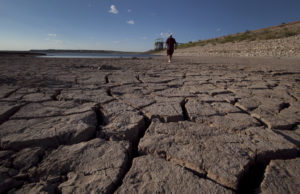 West, south and central Texas are prone to droughts, with agricultural areas already losing productivity and municipal water supplies threatened. Droughts have caused significant losses in the agricultural sector in recent years and are expected to increase in frequency and duration. Droughts have also affected electricity production at fossil fuel power plants that require water to operate.
West, south and central Texas are prone to droughts, with agricultural areas already losing productivity and municipal water supplies threatened. Droughts have caused significant losses in the agricultural sector in recent years and are expected to increase in frequency and duration. Droughts have also affected electricity production at fossil fuel power plants that require water to operate.
Wildfires
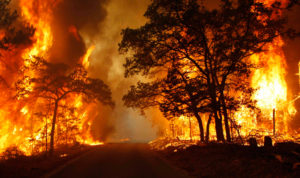 Wildfire risk is also increasing in the western, southern and central parts of Texas, fueled by hotter, drier weather. In 2011, millions of acres burned and thousands of homes were destroyed, resulting in billions of dollars in damage. In some areas, trees lost to wildfires may not be able to be replaced, due to the changing climatic conditions.
Wildfire risk is also increasing in the western, southern and central parts of Texas, fueled by hotter, drier weather. In 2011, millions of acres burned and thousands of homes were destroyed, resulting in billions of dollars in damage. In some areas, trees lost to wildfires may not be able to be replaced, due to the changing climatic conditions.
Flooding
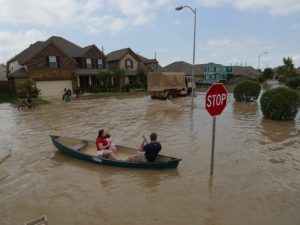 Rainfall intensity is also increasing across most of the state, making flooding more common and more severe. Historic flood plain maps are no longer accurate because areas that didn’t used to flood are now flooding and areas that were in the 500-year or 100-year floodplain (meaning they would, on average, flood once every 500 or every 100 years) are flooding more often. This means that more homes, businesses and other infrastructure are being destroyed.
Rainfall intensity is also increasing across most of the state, making flooding more common and more severe. Historic flood plain maps are no longer accurate because areas that didn’t used to flood are now flooding and areas that were in the 500-year or 100-year floodplain (meaning they would, on average, flood once every 500 or every 100 years) are flooding more often. This means that more homes, businesses and other infrastructure are being destroyed.
Rapid Greenhouse Gas Emissions Reductions Needed
The IPCC’s report also examines the emissions reductions needed to keep average global warming from exceeding 1.5 ºC. The report shows that reducing global greenhouse gas emissions by about 45% by 2030 and to net-zero (as much being pulled from the atmosphere as is emitted) by 2055, would give us about a 66% chance of keeping warming to 1.5. To increase the chance of success to closer to 100%, emissions need to reach net zero by 2040.
